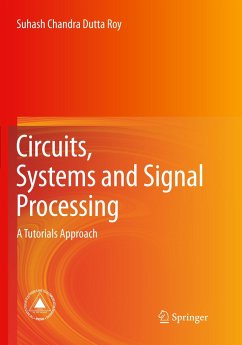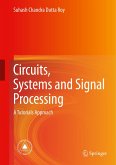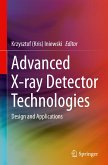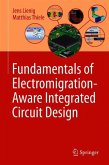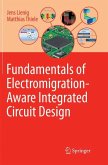- Broschiertes Buch
- Merkliste
- Auf die Merkliste
- Bewerten Bewerten
- Teilen
- Produkt teilen
- Produkterinnerung
- Produkterinnerung
This book is a collection of tutorial-like chapters on all core topics of signals and systems and the electronic circuits. All the topics dealt with in the book are parts of the core syllabi of standard programs in Electrical Engineering, Electrical and Computer Engineering, and Electronics and Telecommunication Engineering domains. This book is intended to serve as a secondary reader or supplementary text for core courses in the area of signals and systems, electronic circuits, and analog and digital signal processing. When studying or teaching a particular topic, the students and instructors…mehr
Andere Kunden interessierten sich auch für
![Circuits, Systems and Signal Processing Circuits, Systems and Signal Processing]() Suhash Chandra Dutta RoyCircuits, Systems and Signal Processing73,99 €
Suhash Chandra Dutta RoyCircuits, Systems and Signal Processing73,99 €![Advanced X-ray Detector Technologies Advanced X-ray Detector Technologies]() Advanced X-ray Detector Technologies66,99 €
Advanced X-ray Detector Technologies66,99 €![CMOS Integrated Analog-to-Digital and Digital-to-Analog Converters CMOS Integrated Analog-to-Digital and Digital-to-Analog Converters]() Rudy J. van de PlasscheCMOS Integrated Analog-to-Digital and Digital-to-Analog Converters249,99 €
Rudy J. van de PlasscheCMOS Integrated Analog-to-Digital and Digital-to-Analog Converters249,99 €![Low-Power Analog Techniques, Sensors for Mobile Devices, and Energy Efficient Amplifiers Low-Power Analog Techniques, Sensors for Mobile Devices, and Energy Efficient Amplifiers]() Low-Power Analog Techniques, Sensors for Mobile Devices, and Energy Efficient Amplifiers121,99 €
Low-Power Analog Techniques, Sensors for Mobile Devices, and Energy Efficient Amplifiers121,99 €![CMOS Integrated Analog-to-Digital and Digital-to-Analog Converters CMOS Integrated Analog-to-Digital and Digital-to-Analog Converters]() Rudy J. van de PlasscheCMOS Integrated Analog-to-Digital and Digital-to-Analog Converters251,99 €
Rudy J. van de PlasscheCMOS Integrated Analog-to-Digital and Digital-to-Analog Converters251,99 €![Fundamentals of Electromigration-Aware Integrated Circuit Design Fundamentals of Electromigration-Aware Integrated Circuit Design]() Jens LienigFundamentals of Electromigration-Aware Integrated Circuit Design97,99 €
Jens LienigFundamentals of Electromigration-Aware Integrated Circuit Design97,99 €![Fundamentals of Electromigration-Aware Integrated Circuit Design Fundamentals of Electromigration-Aware Integrated Circuit Design]() Jens LienigFundamentals of Electromigration-Aware Integrated Circuit Design69,99 €
Jens LienigFundamentals of Electromigration-Aware Integrated Circuit Design69,99 €-
-
-
This book is a collection of tutorial-like chapters on all core topics of signals and systems and the electronic circuits. All the topics dealt with in the book are parts of the core syllabi of standard programs in Electrical Engineering, Electrical and Computer Engineering, and Electronics and Telecommunication Engineering domains. This book is intended to serve as a secondary reader or supplementary text for core courses in the area of signals and systems, electronic circuits, and analog and digital signal processing. When studying or teaching a particular topic, the students and instructors of such courses would find it interesting and worthwhile to study the related tutorial chapter in this book in order to enhance their understanding of the fundamentals, simplification of procedures, alternative approaches and relation to other associated topics. In addition, the book can also be used as a primary or secondary text in short-term or refresher courses, and as a self-study guide forprofessionals wishing to gain a comprehensive review of the signals and systems domain.
Produktdetails
- Produktdetails
- Verlag: Springer Nature Singapore / Springer, Berlin
- Artikelnr. des Verlages: 978-981-13-3901-1
- Softcover reprint of the original 1st edition 2018
- Seitenzahl: 344
- Erscheinungstermin: 10. Januar 2019
- Englisch
- Abmessung: 254mm x 178mm x 19mm
- Gewicht: 655g
- ISBN-13: 9789811339011
- ISBN-10: 9811339015
- Artikelnr.: 55035439
- Herstellerkennzeichnung Die Herstellerinformationen sind derzeit nicht verfügbar.
- Verlag: Springer Nature Singapore / Springer, Berlin
- Artikelnr. des Verlages: 978-981-13-3901-1
- Softcover reprint of the original 1st edition 2018
- Seitenzahl: 344
- Erscheinungstermin: 10. Januar 2019
- Englisch
- Abmessung: 254mm x 178mm x 19mm
- Gewicht: 655g
- ISBN-13: 9789811339011
- ISBN-10: 9811339015
- Artikelnr.: 55035439
- Herstellerkennzeichnung Die Herstellerinformationen sind derzeit nicht verfügbar.
Suhash Chandra Dutta Roy is an Indian electrical engineer and a former professor and head of the department of electrical engineering at the Indian Institute of Technology, Delhi. He is known for his studies on analog and digital signal processing and is an elected fellow of all the three major Indian science academies viz. Indian Academy of Sciences, Indian National Science Academy, National Academy of Sciences, India as well as the Institute of Electrical and Electronics Engineers, Institution of Electronics and Telecommunication Engineers, Systems Society of India and Acoustical Society of India,The Council of Scientific and Industrial Research, the apex agency of the Government of India for scientific research, awarded him the Shanti Swarup Bhatnagar Prize for Science and Technology, one of the highest Indian science awards for his contributions to Engineering Sciences in 1981. Dutta Roy has designed and authored video courses covering five semesters which are being promoted by National Programme on Technology Enhanced Learning, the e-learning platform of the Ministry of Human Resource Development, through their online learning platform.He has been associated with several government agencies as well as a number of international science journals such as International Journal of Circuit Theory and Applications , and Circuits and Systems journal. He was the guest editor for Issue 5 volume 34 of the Journal of Research of the Institution of Electronics and Telecommunication Engineers. He served as a member of the administrative council of the Indian National Science Academy in 2009 and is a member of the National Advisory Committee of Institute of Radio Physics and Electronics of the University of Calcutta. He has delivered invited or keynote speeches at many international seminars and conferences, the 54th Annual Meetingof Indian Association for the Cultivation of Science in 1989 and the 2013 International Conference on Signal Processing and Communication (ICSC 2013) featuring among them.
Section I: Signals and Systems .- 1. Basic Concepts in Signals and Systems.- 2. The Mysterious Impulse Function and Its Mysteries.- 3. State Variables - Part I.- 4. State Variables - Part II.- 5. Carry Out Partial Fraction Expansion of Functions with Repeated Poles.- 6. A Very Simple Method of Finding the Residues at Repeated Poles of a Rational Function in z -1 .- Section II: Passive Circuits .- 7. Circuit Analysis without Transforms.- 8. Transient Response of RLC Networks Revisited.- 9. Appearances can be Deceptive: A Circuit Paradox.- 10. Appearances can be Deceptive- An Initial Value Problem.- 11. Resonance.- 12. The Many Faces of the Single Tuned Circuit.- 13. Analyzing the Parallel-T RC Network.- 14. Design of Parallel-T Resistance Capacitance Networks for Maximum Selectivity.- 15. Perfect Transformer, Current Discontinuity and Degeneracy.- 16. Analytical Solution to the Problem of Charging a Capacitor through a Lamp.- 17. Difference Equations, z-Transforms and Resistive Ladders.- 18. A Third Order Driving Point Synthesis Problem.- 19. Interference Rejection in a UWB System: An Example of LC Driving Point Synthesis.- 20. Low Order Butterworth Filters: From Magnitude to Transfer Function.- 21. Band-Pass/Band-Stop Filter Design by Frequency Transformation.- 22. Optimum Passive Differentiators.- Section III: Active Circuits .- 23. Amplifier Fundamentals.- 24. Appearances can be Deceptive: The Case of a BJT Biasing Circuit.- 25. BJT Biasing Revisited.- 26. Analysis of a High Frequency Transistor Stage.- 27. Transistor Wien Bridge Oscillator.- 28. Analyzing Sinusoidal Oscillator Circuits: A Different Approach.- 29. Triangular to Sine Wave Converter.- 30. Dynamic Output Resistance of the Wilson Current Mirror.- Section IV: Digital Signal Processing .- 31. The ABCD's of Digital Signal Processing (Part 1).- 32. The ABCD's of Digital Signal Processing (Part 2).- 33. On Second Order Digital Band-Pass and Band-Stop Filters.- 34. Derivation of Second Order Canonic All-Pass Digital Filter Realizations.- 35. Derivation of the FIR Lattice Structure.- 36. Solution to a Problem in FIR Lattice Synthesis.- 37. FIR Lattice Structures with Single Multiplier Sections.- 38. A Note on the FFT.- Appendix : Some Mathematical Topics Simplified .- A.1. A Semi-Analytical Method for Finding the Roots of a Polynomial.- A.2. A Fresh Look at the Euler's Relation.- A.3. Approximating the Square Root of the Sum of Two Squares .- A.4. On the Solution of Quartic and Cubic Equations.- A.5. Many Ways of Solving an Ordinary Linear Second Order Differential Equation with Constant Coefficients.- A.6. Proofs of Two Chebyshev Polynomial Identities Useful in Digital Filter Design.- A.7. Computation of the Coefficients of Chebyshev Polynomials .- Sources .
Section I: Signals and Systems .- 1. Basic Concepts in Signals and Systems.- 2. The Mysterious Impulse Function and Its Mysteries.- 3. State Variables - Part I.- 4. State Variables - Part II.- 5. Carry Out Partial Fraction Expansion of Functions with Repeated Poles.- 6. A Very Simple Method of Finding the Residues at Repeated Poles of a Rational Function in z -1 .- Section II: Passive Circuits .- 7. Circuit Analysis without Transforms.- 8. Transient Response of RLC Networks Revisited.- 9. Appearances can be Deceptive: A Circuit Paradox.- 10. Appearances can be Deceptive- An Initial Value Problem.- 11. Resonance.- 12. The Many Faces of the Single Tuned Circuit.- 13. Analyzing the Parallel-T RC Network.- 14. Design of Parallel-T Resistance Capacitance Networks for Maximum Selectivity.- 15. Perfect Transformer, Current Discontinuity and Degeneracy.- 16. Analytical Solution to the Problem of Charging a Capacitor through a Lamp.- 17. Difference Equations, z-Transforms and Resistive Ladders.- 18. A Third Order Driving Point Synthesis Problem.- 19. Interference Rejection in a UWB System: An Example of LC Driving Point Synthesis.- 20. Low Order Butterworth Filters: From Magnitude to Transfer Function.- 21. Band-Pass/Band-Stop Filter Design by Frequency Transformation.- 22. Optimum Passive Differentiators.- Section III: Active Circuits .- 23. Amplifier Fundamentals.- 24. Appearances can be Deceptive: The Case of a BJT Biasing Circuit.- 25. BJT Biasing Revisited.- 26. Analysis of a High Frequency Transistor Stage.- 27. Transistor Wien Bridge Oscillator.- 28. Analyzing Sinusoidal Oscillator Circuits: A Different Approach.- 29. Triangular to Sine Wave Converter.- 30. Dynamic Output Resistance of the Wilson Current Mirror.- Section IV: Digital Signal Processing .- 31. The ABCD's of Digital Signal Processing (Part 1).- 32. The ABCD's of Digital Signal Processing (Part 2).- 33. On Second Order Digital Band-Pass and Band-Stop Filters.- 34. Derivation of Second Order Canonic All-Pass Digital Filter Realizations.- 35. Derivation of the FIR Lattice Structure.- 36. Solution to a Problem in FIR Lattice Synthesis.- 37. FIR Lattice Structures with Single Multiplier Sections.- 38. A Note on the FFT.- Appendix : Some Mathematical Topics Simplified .- A.1. A Semi-Analytical Method for Finding the Roots of a Polynomial.- A.2. A Fresh Look at the Euler's Relation.- A.3. Approximating the Square Root of the Sum of Two Squares .- A.4. On the Solution of Quartic and Cubic Equations.- A.5. Many Ways of Solving an Ordinary Linear Second Order Differential Equation with Constant Coefficients.- A.6. Proofs of Two Chebyshev Polynomial Identities Useful in Digital Filter Design.- A.7. Computation of the Coefficients of Chebyshev Polynomials .- Sources .

